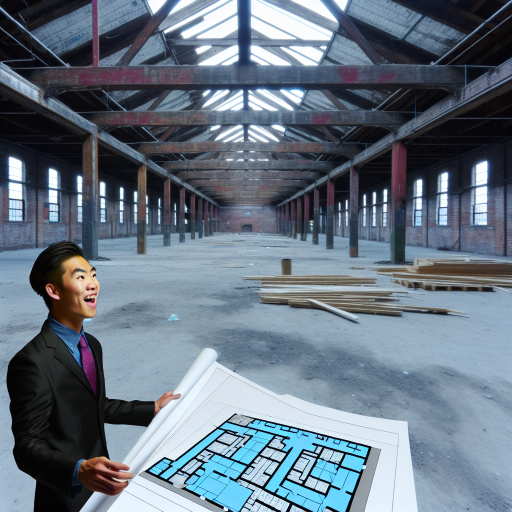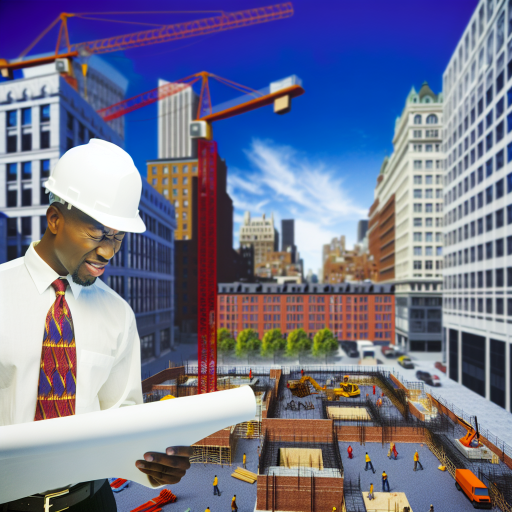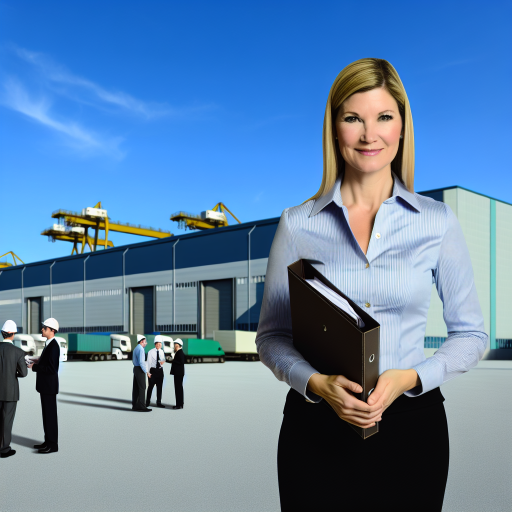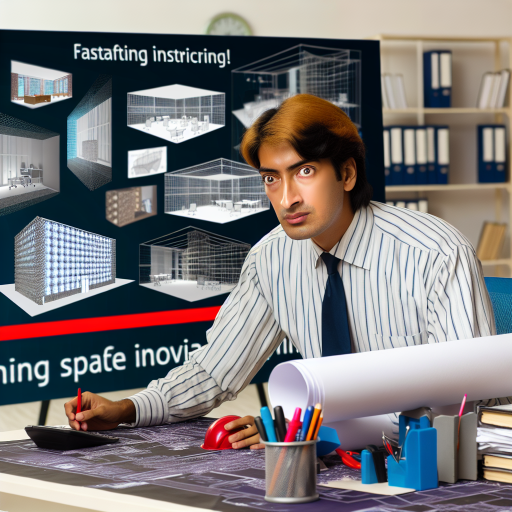Introduction
Commercial real estate development is witnessing significant changes.
Innovative trends shape our cities and redefine workspaces.
Developers face evolving consumer needs and sustainability demands.
These challenges require fresh perspectives and creative solutions.
One such solution lies in adaptive reuse.
Adaptive reuse involves repurposing old buildings for new functions.
It breathes new life into unused structures while preserving their historical value.
This practice fosters sustainability by minimizing waste and reducing the need for new materials.
Adaptive reuse promotes efficient land use, revitalizing communities and enhancing urban landscapes.
Many developers are embracing this concept, especially in urban areas where space is scarce.
Understanding adaptive reuse is crucial for future commercial real estate strategies.
It addresses both the environmental and financial aspects of development.
As cities become denser, the pressure to create innovative spaces increases.
Adaptive reuse emerges as a powerful tool in meeting this demand.
It allows for the transformation of old factories, warehouses, or churches into modern office spaces and vibrant retail environments.
Investors and developers recognize the financial benefits of adaptive reuse.
Renovating an existing building often costs less than new construction.
Additionally, repurposed spaces can attract businesses seeking unique settings.
An intriguing location can serve as a significant competitive advantage.
This approach also brightens the overall economic landscape, generating jobs and supporting local businesses.
The importance of discussing adaptive reuse in the commercial real estate context cannot be overstated.
This strategy not only conserves resources but also honors historical architecture.
By integrating the old with the new, we foster community ties and stimulate cultural appreciation.
As we envision the future of commercial real estate, adaptive reuse stands out as a promising solution.
It intertwines sustainability, financial viability, and innovation in one comprehensive approach.
Definition and Historical Context
Adaptive reuse refers to the process of repurposing old spaces for new uses.
This approach breathes new life into underutilized or obsolete buildings.
It blends historical preservation with modern needs, making it a vital aspect of contemporary urban development.
The significance of adaptive reuse lies in its ability to preserve cultural heritage while minimizing environmental impact.
It encourages sustainability by reducing waste and resource consumption.
In an era where climate change is a pressing concern, adaptive reuse stands out as a proactive solution.
Historical Examples of Adaptive Reuse Projects
Many cities around the world showcase successful examples of adaptive reuse.
These projects redefine spaces, integrate history, and stimulate economic growth.
Below are notable examples that illustrate the potential of adaptive reuse:
- The High Line, New York City: Once an abandoned elevated railway, the High Line now serves as a public park.
- Gas Works Park, Seattle: A former gasification plant has been converted into a vibrant park.
- Riverside Studios, London: A former dairy factory has been transformed into a cultural center.
- Chase Center, San Francisco: Once a post office, this building now houses commercial and retail spaces.
- Pioneer Mill, Lahaina, Hawaii: This historic sugar mill has been converted into a boutique shopping destination.
These examples exemplify how adaptive reuse can invigorate urban areas.
By breathing new life into old structures, cities can preserve their unique identities while embracing growth.
Shift in Perceptions of Old Buildings
Historically, many developers viewed old buildings as liabilities.
They considered them costly and burdensome.
However, current real estate perspectives have evolved dramatically.
- Increased Awareness: Developers recognize the historical and cultural value of these structures.
- Economic Viability: Investors see adaptive reuse as a financially sound strategy.
- Government Incentives: Tax credits and grants encourage adaptive reuse projects.
- Community Demand: Consumers increasingly prefer unique spaces over cookie-cutter developments.
- Environmental Considerations: As sustainability becomes a priority, developers embrace adaptive reuse to reduce their carbon footprint.
The current sentiment highlights a shift towards valuing historical architecture.
Rather than seeing potential for decay, developers now envision thriving communities bolstered by adaptive reuse.
The Future of Adaptive Reuse in Urban Development
The future of adaptive reuse in commercial real estate development looks promising.
As urban populations continue to grow, adaptive reuse offers practical solutions to housing and commercial needs.
Integrating urban planning with adaptive reuse can have multiple benefits:
- Sustainability: Adaptive reuse reduces the reliance on new materials.
- Preservation of History: Developers can retain artifacts of the past.
- Community Engagement: Adaptive reuse projects often incorporate local input.
- Revitalized Economies: By attracting businesses and visitors, adaptive reuse stimulates local economies.
- Innovative Designs: Adaptive reuse encourages creative architectural solutions.
These factors illustrate why adaptive reuse should be integral to future urban development strategies.
Developers must prioritize these initiatives to meet demand while respecting history.
Implications for Urban Growth
Adaptive reuse serves as a beacon for the future of commercial real estate development.
It intertwines sustainability, economic sensibility, and cultural preservation.
Embracing this practice will shape resilient, vibrant urban environments that honor their past while enabling future growth.
Investors, developers, and city planners must recognize the immense potential of every old building.
By transforming them into modern spaces, they can foster a renewed connection between past and present.
Adaptive reuse isn’t just about preservation; it’s about creating sustainable futures while cherishing our architectural heritage.
As we look ahead, the narrative around urban development must evolve to focus on adaptive reuse as a key strategy for revitalization.
Environmental Benefits
Adaptive reuse stands as a powerful strategy for promoting sustainability in commercial real estate development.
This approach emphasizes the importance of reimagining neglected structures for new purposes.
By repurposing existing buildings, developers can significantly impact environmental issues.
Exploration of Sustainability through Adaptive Reuse
Adaptive reuse embodies the principle of sustainability by maximizing the utility of current resources.
- It enhances energy efficiency by retaining the original structure’s materials.
- Existing buildings often have foundational elements that require less energy to maintain.
- Repurposed spaces can incorporate modern technologies, improving overall sustainability.
- This approach helps preserve the unique character and cultural heritage of neighborhoods.
- Communities benefit from the revitalization of historic buildings, sparking local pride.
Architects and developers prioritize adaptive reuse in their projects.
They recognize that it provides a path to sustainability without starting from scratch.
Projects can range from transforming warehouses into trendy office spaces to converting churches into boutique hotels.
Each of these projects preserves history while embracing modern functionalities.
How Adaptive Reuse Reduces Waste by Repurposing Existing Structures
One of the most significant advantages of adaptive reuse is waste reduction.
- Renovating existing buildings minimizes construction debris generated from new developments.
- Material reuse often reduces the need for new products, which conserves natural resources.
- Recycling materials from outdated structures can become a part of the remodeling process.
- Demolishing old buildings creates substantial waste, while reuse requires less material removal.
- Valuable architectural elements—like bricks, wood, and metals—can be salvaged and used again.
By focusing on adaptive reuse, developers embrace a different mindset.
They pivot away from the throwaway culture pervasive in modern construction practices.
Each building embodies a story and history, making its preservation invaluable.
This approach encourages investors and owners to think long-term, valuing sustainability.
Discussion on the Carbon Footprint Reduction Associated with Using Existing Buildings Versus New Construction
Carbon footprint reduction remains a significant selling point for adaptive reuse projects.
- New construction requires substantial energy input for demolition, excavation, and construction.
- Repurposing existing buildings cuts down on energy consumption substantially.
- Retaining original structures reduces the demand for new raw materials.
- Adaptive reuse typically involves less transportation, further lowering energy use and emissions.
- According to research, the carbon savings from repurposing can be staggering.
Data shows that reused buildings often generate lower lifecycle emissions compared to new builds.
Furthermore, adaptive reuse initiatives often lead to the installation of energy-efficient systems.
Modern insulation, HVAC systems, and renewable energy sources can be integrated seamlessly into these projects.
Such upgrades not only enhance sustainability but also lower long-term operational costs.
This creates a win-win scenario for property owners and tenants alike.
Community and Economic Benefits
Beyond environmental factors, adaptive reuse offers significant community and economic benefits.
- Restoring a building fosters local businesses and jobs in the area.
- It attracts tourist interest, bolstering the local economy.
- Residents often enjoy enhanced amenities and public spaces surrounding adapted structures.
- Adaptive reuse projects can elevate a neighborhood’s aesthetic appeal and property values.
Real estate developers acknowledge that enhancing the built environment fuels economic revitalization.
They adopt adaptive reuse not only for environmental reasons but also for its profound impact on community well-being.
Future Directions in Adaptive Reuse Strategy
Adaptive reuse emerges as a practical and environmentally conscious solution for the future of commercial real estate.
As we navigate climate change, resource scarcity, and urbanization challenges, reusing existing structures is pivotal.
The journey toward sustainability relies heavily on our ability to think differently about how we use our built environment.
Holding onto established buildings allows communities to celebrate their history while adapting to future needs.
As more developers embrace adaptive reuse, the benefits will multiply, leading to greener, more vibrant cities.
Discover More: Why Co-Working Spaces Are Becoming the Future of Commercial Real Estate
Economic Advantages
Adaptive reuse offers significant economic benefits for communities, developers, and investors.
By repurposing existing structures, adaptive reuse projects dramatically reduce construction costs.
They also minimize the expenses associated with demolition and new construction.
Below, we explore the various economic advantages of adaptive reuse.
Cost Savings through Adaptive Reuse Projects
One of the most appealing aspects of adaptive reuse is the potential for substantial cost savings.
Developers often find that refurbishing an existing building is cheaper than demolishing and constructing anew.
Here are key reasons why adaptive reuse is cost-effective:
- Reduced Construction Costs: The primary materials often remain intact and usable, lowering material costs.
- Lower Demolition Expenses: Government regulations frequently add costs to demolition, making reuse a cheaper option.
- Tax Incentives: Many governments offer tax credits for developers who engage in adaptive reuse, further enhancing savings.
- Faster Project Completion: Renovating an existing structure reduces the time to market, allowing for quicker return on investment.
Through these factors, adaptive reuse projects often present a more financially viable option than typical new constructions.
Developers can leverage these savings to invest in further project enhancements or community initiatives.
Stimulation of Local Economies and Job Creation
Adaptive reuse not only benefits developers but also spurs local economic growth.
By investing in existing buildings, developers contribute to the rejuvenation of neighborhoods.
This activity helps create jobs and enhances social infrastructure.
Here’s how adaptive reuse stimulates local economies:
- Job Creation: Renovation creates numerous construction jobs, from general laborers to specialized tradespeople.
- Support for Local Businesses: Revitalized buildings attract new businesses, promoting local shopping and dining options.
- Increased Property Values: Well-designed adaptive reuse projects elevate property values in surrounding areas, enhancing local tax revenues.
- Boosting Tourism: Unique historical buildings often draw tourists, contributing to local economies through increased spending.
In summary, adaptive reuse actively engages local communities, spurring job creation and stimulating economic growth.
This benefit often extends far beyond the immediate development.
Case Studies of Successful Adaptive Reuse Projects
Several landmark adaptive reuse projects have significantly impacted their local economies.
These cases exemplify how adaptive reuse can drive growth and innovation.
Let’s explore some notable examples:
- The High Line, New York City: This elevated park transformed an old railway line into a vibrant public space. The project has spurred nearby economic development, attracting millions in investment and boosting local businesses.
- The Tate Modern, London: Once a power station, this museum has become one of the world’s leading cultural institutions. It revitalized the surrounding area, promoting tourism and local business growth.
- Ocean Terminal, Hong Kong: The conversion of this aging container port into a shopping and entertainment complex generated over 2,000 jobs. It sustained local economic activity and transformed the neighborhood into a thriving urban center.
- Factory 586, Chicago: This former manufacturing plant was redeveloped into a mixed-use space, resulting in over 300 new jobs. It revitalized the community while preserving its historical character.
These case studies highlight that adaptive reuse can be a powerful tool for economic revitalization.
By breathing new life into old structures, communities can achieve sustainable growth and development.
Economic Impact of Adaptive Reuse
The economic advantages of adaptive reuse are clear.
Developers and local governments benefit from lower costs and new job creation.
Communities frequently experience a revitalization that results in sustainable growth.
As the real estate industry continues to evolve, adaptive reuse stands out as a promising strategy for future development.
It not only preserves historical character, but also fosters economic resilience in urban areas.
See Related Content: Why E-Commerce Growth is Reshaping Commercial Real Estate in Retail Markets
Understanding Consumer Preferences in Real Estate Development
Understanding consumer preferences is essential for any successful real estate development.
Today’s market increasingly favors unique and engaging spaces.
Adaptive reuse plays a crucial role in this evolving landscape.
Here’s a deeper look into market demands and consumer preferences driving this trend.
Insights into Changing Consumer Preferences
Consumers are becoming more discerning in their choices.
They prioritize authenticity, character, and history in the spaces they occupy.
This shift reflects broader societal changes, where experiences hold more value than material goods.
- Desire for Unique Experiences: Consumers seek personalized experiences that resonate with their identities.
- Fascination with History: Historical spaces tell stories, fostering a connection to the past.
- Emphasis on Aesthetic Appeal: Consumers appreciate architecture that evokes emotions and admiration.
The demand for unique spaces significantly shapes real estate development.
Developers who adapt older structures align with this growing consumer preference.
Adaptive reuse encourages innovation while respecting historical significance.
Impact of Millennial and Gen Z Demographics
Millennials and Gen Z are redefining market trends.
Their tastes and values influence the types of properties that garner interest.
Developers must understand these demographics to succeed in today’s market.
- Preference for Walkable Communities: Younger generations often desire neighborhoods that offer accessibility to amenities.
- Environmental Consciousness: These demographics prioritize sustainability in their living and working spaces.
- Work-Life Balance: Flexible work environments that blend professional and personal life attract their attention.
Adaptive reuse projects align well with millennial and Gen Z values.
Transforming existing buildings into modern spaces meets their demand for sustainability and community integration.
Such developments often include ecological features and provide local job opportunities.
The Growing Interest in Mixed-Use Developments
Mixed-use developments are becoming increasingly appealing.
These projects combine residential, commercial, and recreational spaces.
They create vibrant environments that foster community engagement.
- Community Interaction: Mixed-use spaces encourage social interactions among residents and businesses.
- Convenience: They offer residents easy access to work, shopping, dining, and leisure activities.
- Economic Revitalization: Such developments often stimulate local economies by attracting diverse businesses.
Adaptive reuse complements the mixed-use trend.
Repurposing old buildings creates a unique charm that cannot be emulated in new constructions.
Developers can capitalize on existing structures while introducing innovative designs.
Adapting to Market Trends
Developers must adapt to the market’s changing landscape.
The consumer’s demand for authenticity and uniqueness will only grow.
Therefore, real estate projects should acknowledge these preferences.
- Incorporating Local Culture: Developers should immerse themselves in local culture and history.
- Engaging Community Input: Gathering feedback from community members can guide development projects.
- Prioritizing Flexibility: Spaces should be versatile, allowing for various uses over time.
By integrating these factors, developers can ensure their projects resonate with consumers.
Adaptive reuse inherently supports these goals, providing an effective vehicle for innovative design.
Existing structures often offer more than just historical significance— they offer potential.
Uncover the Details: Commercial Real Estate: Key Insights for Smart Investments
Regulatory and Financial Incentives
Adaptive reuse projects gain traction due to various regulatory frameworks and financial incentives.
These incentives foster a supportive environment for developers.
Understanding these regulations can significantly impact project feasibility and success.
Overview of Zoning Laws and Regulations
Zoning laws dictate how land can be used.
Local governments often recognize the value in repurposing existing buildings.
Consequently, many municipalities adopt policies that encourage adaptive reuse.
These policies may include:
- Flexible Zoning Codes: Many cities adjust their zoning codes to accommodate adaptive reuse. This flexibility allows developers to modify existing structures rather than starting from scratch.
- Bonus Schemes: Certain areas offer density bonuses for developers. By allowing additional units or square footage, these incentives motivate adaptive reuse of properties.
- Mixed-Use Designations: Local governments often create zones encouraging mixed-use developments. Such designations enable diverse uses, enhancing community livability and economic viability.
- Streamlined Permitting Processes: Some jurisdictions provide expedited permitting for adaptive reuse projects. This efficiency reduces bureaucratic delays and encourages developers to pursue these opportunities.
These adjustments in regulations demonstrate a commitment to sustainable development.
They focus on using existing assets rather than consuming more land.
This focus aligns with broader sustainability goals, such as reducing urban sprawl and preserving historical architecture.
Federal, State, and Local Tax Incentives
Financial incentives play a pivotal role in promoting adaptive reuse.
Various tax breaks and credits aim to make these projects financially appealing.
- Historic Tax Credit: This federal incentive allows developers to claim a credit for rehabilitation costs. The credit applies to certified historic structures, substantially lowering project costs.
- State-Specific Tax Credits: Many states offer their own tax credits. These incentives vary widely and can significantly impact the total financial package available for developers.
- Local Tax Abatements: Some municipalities offer tax abatements for adaptive reuse projects. These abatements reduce property taxes for a defined period, improving cash flow during critical project phases.
- Grants and Subsidies: Various governmental bodies provide grants to support adaptive reuse. These funds can address specific community needs or support green building initiatives.
By leveraging these financial incentives, developers can significantly lower upfront costs.
They can also realize a quicker return on investment.
These factors make adaptive reuse viable for various project types, including residential, commercial, and mixed-use developments.
How Financial Institutions View Adaptive Reuse Projects
Financial institutions increasingly recognize the potential of adaptive reuse projects.
As sustainable practices gain momentum, banks and investors adjust their perspectives.
They view adaptive reuse as a sound investment choice.
- Lower Risk Profiles: Adaptive reuse projects often present lower risks than new constructions. Established structures have proven track records, minimizing uncertainty for lenders.
- Community Support: Many adaptive reuse initiatives receive local community backing. This strong support enhances project stability and future success, making lenders more amenable.
- Positive Cash Flow: Properties undergoing adaptive reuse often generate quicker cash flow. This immediacy provides reassurance to financial institutions regarding loan repayment.
- Increased Demand: As preferences shift, demand for unique and historic spaces rises. Developers can capitalize on this trend, creating desirable retail or residential options.
Incorporating adaptive reuse into financing strategies reflects evolving investment landscapes.
Financial institutions now prioritize sustainability alongside profitability.
This shift encourages a greater number of adaptive reuse projects, further driving innovation in the sector.
Regulatory frameworks and financial incentives create a supportive ecosystem for adaptive reuse.
Updated zoning laws and financial backing facilitate project realization.
Developers who understand and leverage these incentives are well-positioned to succeed.
As the commercial real estate landscape continues to evolve, adaptive reuse will play a critical role in sustainable development.
Gain More Insights: Eco-Friendly Materials in Construction Today
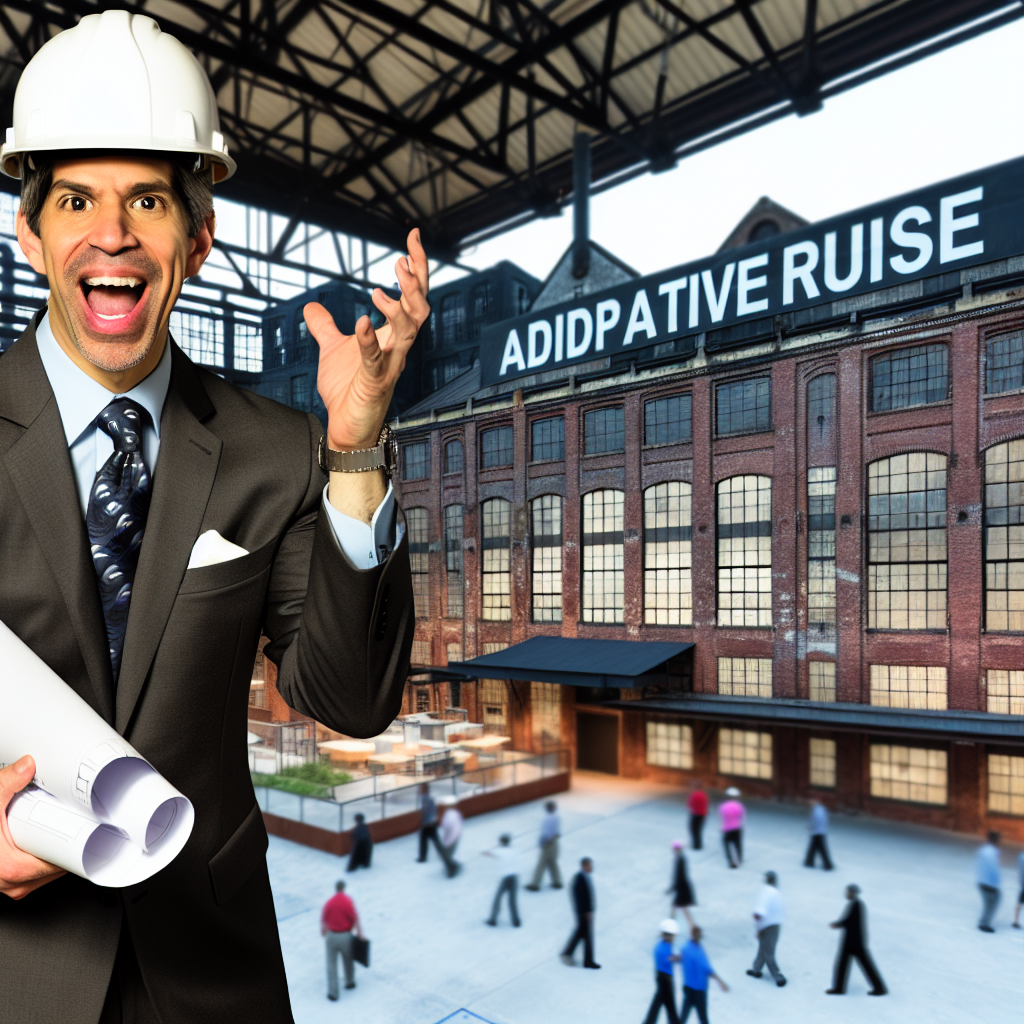
Challenges and Considerations
Adaptive reuse stands as a compelling solution in commercial real estate development.
However, it does come with its challenges.
Addressing these obstacles is vital for successful outcomes.
Understanding various issues can help developers create effective strategies.
Below, we examine common challenges faced in adaptive reuse projects.
Structural Integrity Issues
One primary concern in adaptive reuse involves structural integrity.
Older buildings often present hidden challenges.
Discovering these problems during the renovation can lead to unexpected costs.
Here are key points to consider regarding structural issues:
- Foundation Concerns: Many older buildings lack modern foundation requirements. This weakness can lead to significant issues during renovation.
- Material Degradation: Time takes a toll on materials. Developers must carefully assess wood, concrete, and steel before proceeding.
- Environmental Hazards: Older structures may contain hazardous materials, like asbestos or lead paint. Identifying these early is essential to avoid costly remediation.
- Load-Bearing Elements: Developers need to assess how modern design affects load-bearing walls. Altering these elements can compromise safety.
Addressing these structural integrity issues requires thorough inspections.
Consulting with structural engineers helps navigate potential pitfalls.
Investing in proper assessments ultimately saves time and money.
Design Constraints
Designing for adaptive reuse presents unique constraints.
Blending preservation with modernization is no simple task.
Achieving this balance requires thoughtful planning and consideration.
Here are several design challenges developers may face:
- Historic Preservation: Many older buildings have historical significance. Developers must adhere to preservation guidelines while creating functional spaces.
- Limitations of Space: Removing interior walls may not always be feasible. Existing layouts could significantly limit creative design solutions.
- Modern Amenities: Incorporating modern features in older buildings can be difficult. Developers must find ways to enhance functionality without compromising character.
- Community Aesthetics: The new design must fit within the local context. This aspect adds another layer of consideration when reimagining spaces.
Collaborating closely with architects and preservationists can yield effective designs.
This teamwork helps ensure that modern amenities do not overshadow historical elements.
Engaging the community during the design phase can also enhance acceptance.
Regulatory Hurdles
Navigating regulatory hurdles can be particularly challenging.
Adaptive reuse projects often involve intricate regulatory frameworks.
Understanding local zoning laws and building codes is critical for success.
Here are some strategies for managing these hurdles:
- Comprehensive Research: Conduct thorough research on local regulations. Knowing the rules goes a long way toward compliance.
- Engaging Local Authorities: Building a relationship with local planning officials fosters open communication. This approach can facilitate smoother project approvals.
- Variance Applications: Sometimes, deviations from zoning laws are necessary. Be prepared to apply for variances when required.
- Community Engagement: Involving community members in the planning process builds support. This collaboration can prevent pushback during regulatory assessments.
Adapting to regulations takes time but pays off in the long run.
A proactive approach to regulation can streamline processes considerably.
Hiring professionals experienced in navigating local rules also simplifies the journey.
Financing Challenges
Funding adaptive reuse projects can often be complicated.
Traditional financing options may not always apply to these unique developments.
Developers should explore various avenues to secure funding.
Here are several ideas for overcoming financial challenges:
- Government Grants: Many local and federal programs offer grants for preservation efforts. Research available grants that may apply to your project.
- Tax Incentives: Historic tax credits can significantly reduce costs. Developers should investigate available tax incentive programs as part of their financing strategy.
- Private Investment: Engaging private investors who specialize in adaptive reuse can provide necessary capital. Presenting a solid plan can attract the right partners.
- Crowdfunding: Leveraging online platforms can help gather funds from interested stakeholders. This method allows for community involvement while securing needed resources.
Creating a robust financial plan enables developers to tackle funding obstacles head-on.
Diversifying funding sources can enhance project viability.
Building relationships with financial institutions that understand adaptive reuse is also beneficial.
Future Trends and Innovations
Adaptive reuse continues to gain traction in commercial real estate development.
As cities evolve, so do their needs for space.
This section explores the future trends, technological innovations, and the integration of adaptive reuse in smart city initiatives.
Predictions on the Future of Adaptive Reuse in Real Estate Development
The future of adaptive reuse appears promising.
Many experts predict that it will dominate the landscape of commercial real estate.
Here are some key predictions:
- Increased Demand: Urbanization drives the need for sustainable development.
- Focus on Sustainability: Sustainability will remain a priority.
- Government Support: Government policies will increasingly favor adaptive reuse.
- Community Engagement: Future adaptive reuse projects will involve local communities more.
- Enhanced Aesthetics: Developers will focus on the aesthetics of adaptive reuse.
The Role of Technology in Enhancing Adaptive Reuse Processes
Technology plays a crucial role in the adaptive reuse process.
Modern tools can streamline projects and improve outcomes.
Here are some innovative technologies transforming the field:
- 3D Modeling: This technology allows architects to visualize potential changes.
- Virtual Reality (VR): VR can offer immersive experiences for stakeholders.
- Building Information Modeling (BIM): BIM aids in documenting existing structures.
- Drone Surveys: Drones provide aerial views of properties.
- Smart Building Technology: Integrating smart technologies enhances building performance.
Discussion on the Integration of Adaptive Reuse Within Smart City Initiatives
Adaptive reuse aligns seamlessly with smart city goals.
Smart cities prioritize sustainability, efficiency, and resilience.
Here are ways adaptive reuse integrates into these initiatives:
- Resource Efficiency: Transforming existing spaces reduces construction waste.
- Preservation of Culture: Adaptive reuse maintains the historical significance of buildings.
- Mixed-Use Development: Many adaptive reuse projects become mixed-use hubs.
- Mobility Solutions: Adaptive reuse developments often reside in urban centers.
- Community Resilience: Repurposing existing spaces strengthens community ties.
As we look to the future, adaptive reuse will evolve alongside advancements in technology and urban planning.
It will shape the way we think about commercial real estate development.
Embracing these trends and innovations will lead to more sustainable and vibrant communities.
Adaptive reuse stands poised to reshape the commercial real estate landscape.
It is not just a trend; it is a transformative approach to urban development.
Engaging with emerging technologies and smart city concepts will enhance this movement.
The future of adaptive reuse looks bright, promising a harmonious blend of the old and the new.
Implications of Adaptive Reuse in Commercial Real Estate
Adaptive reuse offers immense benefits for commercial real estate.
It conserves resources and reduces waste, promoting sustainability in various ways.
By repurposing existing structures, developers save time and capital compared to new constructions.
This approach minimizes the environmental impact associated with demolition and new builds.
Moreover, adaptive reuse enhances community aesthetics.
Retaining historical elements fosters local identity and preserves cultural heritage.
This creates unique spaces that attract businesses and visitors alike.
Vibrant environments contribute to a sense of belonging, boosting local economies.
Economically, adaptive reuse provides cost-effective solutions for space shortages.
Vacant or underused properties can transform into thriving commercial ventures.
This not only revitalizes neighborhoods but also increases property values.
Investors benefit from high demand for unique, energy-efficient spaces.
Furthermore, adaptive reuse aligns with modern lifestyle trends.
Consumers today seek authenticity and sustainability in the environments they frequent.
By embracing adaptive reuse, developers meet these expectations, enhancing tenant satisfaction and retention.
This trend reflects broader shifts in consumer behavior towards conscious choices.
Adaptive reuse is more than just a trend; it signifies a paradigm shift in real estate development.
It embodies innovative thinking and proactive problem-solving.
As cities evolve, adaptive reuse presents solutions for space optimization and urban renewal.
The role of adaptive reuse in commercial real estate cannot be overstated.
Developers, investors, and policymakers must recognize its potential.
Embracing adaptive reuse as a key strategy can lead to sustainable growth for our communities.
Adaptive reuse is not merely a response to immediate challenges.
It is a long-term solution that fosters resilience and creativity in commercial real estate.
Together, let us champion this sustainable approach and shape a brighter future for urban development.
Additional Resources
Keisha Virtue – Senior Research Analyst, Retail – JLL | LinkedIn
Commercial Market Resiliency Initiative – Official Website of …

